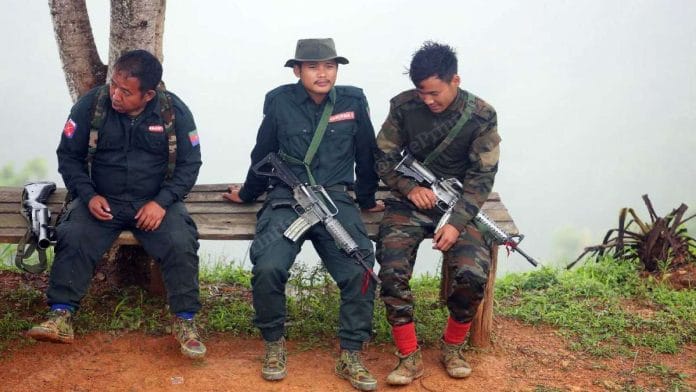Chellep: He claims he was 14 when he first dropped arms to enter the camp — situated in a remote location in Manipur’s Chellep bereft of any habitation — along with 15 other insurgents united by a common cause.
At the time, he was not sure about his life, or the future of the cause he had taken up arms for.
Thirteen years on, the uncertainty has far from cleared. Now a 27-year-old, he says he has no education or vocational skills to secure his livelihood — contrary to promises made when he made his way into the camp.
The camp this unnamed member of the insurgent group Kuki National Army (KNA) is lodged at is one of 14 set up throughout Manipur since 2008 for former insurgents.
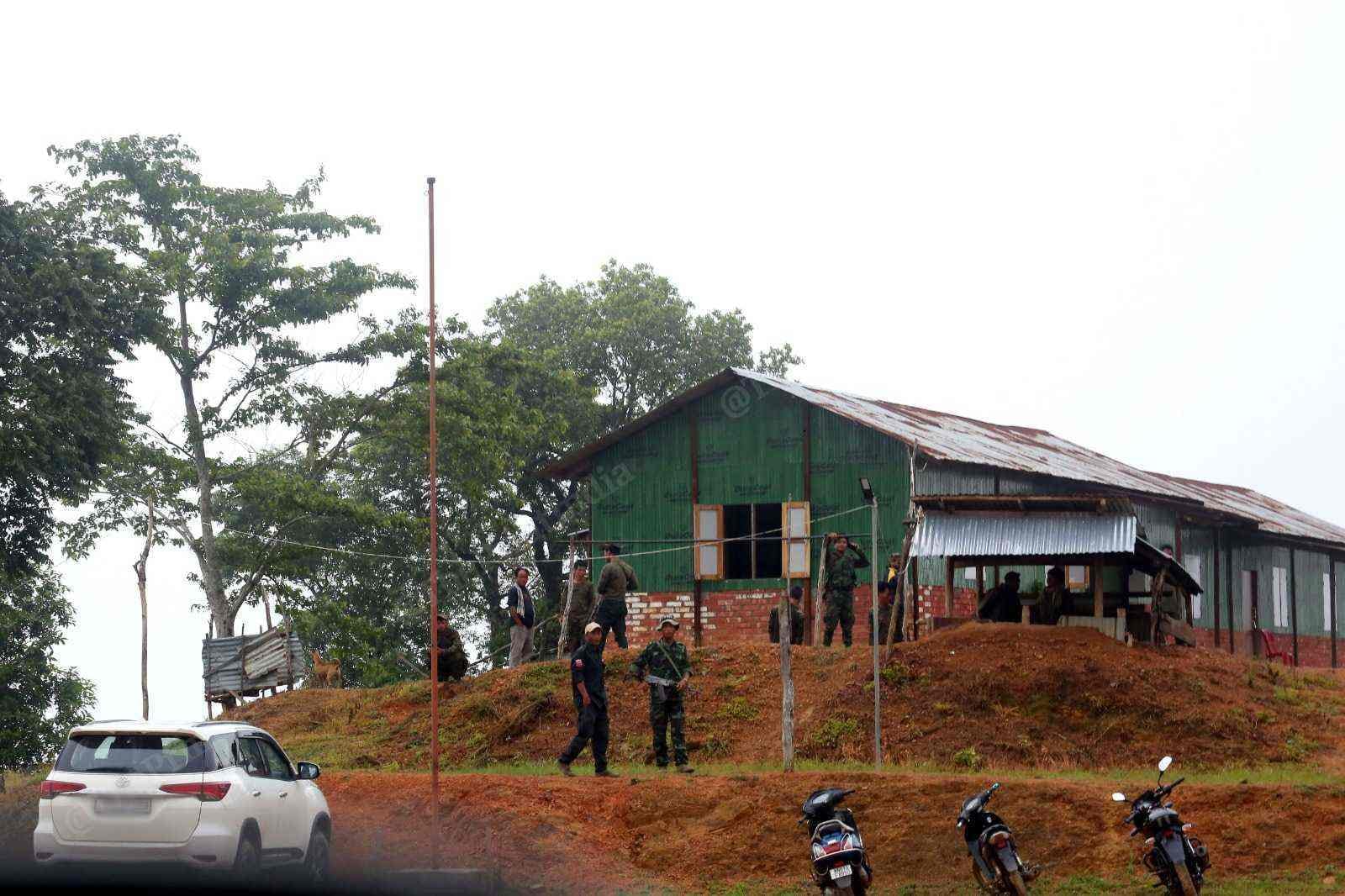
The ‘Suspension of Operations (SoO)’ camps — which have become the focal point of the ongoing conflict in the state — were established as part of a pact signed on 22 August 2008 between the Kuki militant groups and the central and Manipur governments, in light of the Kuki-Naga clashes in the 1990s.
According to the SoO agreement, members of these groups were required to suspend their operation as insurgents and stay within designated camps with their weapons securely stored in safe zones under a double-locking system.
The cadres were prohibited from opening fire, and the security forces from launching operations against them.
Although the agreement — aimed at halting the violence and “resolving” the conflict stemming from the Kukis’ demand for an “independent Kuki homeland” — is reviewed each year, it is extended annually by the Ministry of Home Affairs (MHA) with minimal deliberation.
Union Home Minister Amit Shah has time and again, including ahead of the 2022 assembly elections, promised to “solve” the long-pending issue if the BJP comes to power.
However, despite securing a strong electoral victory in 2022 again, the N. Biren Singh government — which has the support of 10 Kuki MLAs — has failed to provide a definitive solution, allowing the insurgency to persist.
That’s not all.
Despite the agreement’s commitment to rehabilitating these cadres and integrating them into the mainstream, no tangible steps have been taken in this direction.
As a result, sources in the security establishment say, the insurgency has been “kept alive” and continues to “thrive”.
All these cadres are paid a stipend of Rs 6,000 per month by the government. While they have been asked to restrict themselves to the camp, and allowed periods of leave to visit home, there have been allegations that many exit the camp at will.
Now, in the ongoing Manipur conflict between the Kukis and Meiteis, which has resulted in over 200 fatalities and displaced more than 50,000 people since it erupted on 3 May, the Biren Singh government has accused these cadres of “contributing to the escalation of violence”.
“This agreement merely prevents the initiation of a new cycle of violence. It acts as a pause button, not a solution,” said a source in the security establishment.
“Isolating insurgents in distant camps with their weapons can never be a solution. By doing this, the Union government is allowing a live insurgency to fester.”
In addition, the government’s inaction in this regard has provided a pretext for Meitei groups to arm themselves, the source added.
“After clashes erupted on 3 May, the Meiteis in the Valley raided police armouries in Imphal, claiming it was for self-defence. They argued that since the Kukis had the backing of cadres in the SoO camps and access to weapons, they needed to arm themselves for protection,” the source explained. “While this action is not justifiable, it did serve as a justification for their arming.”
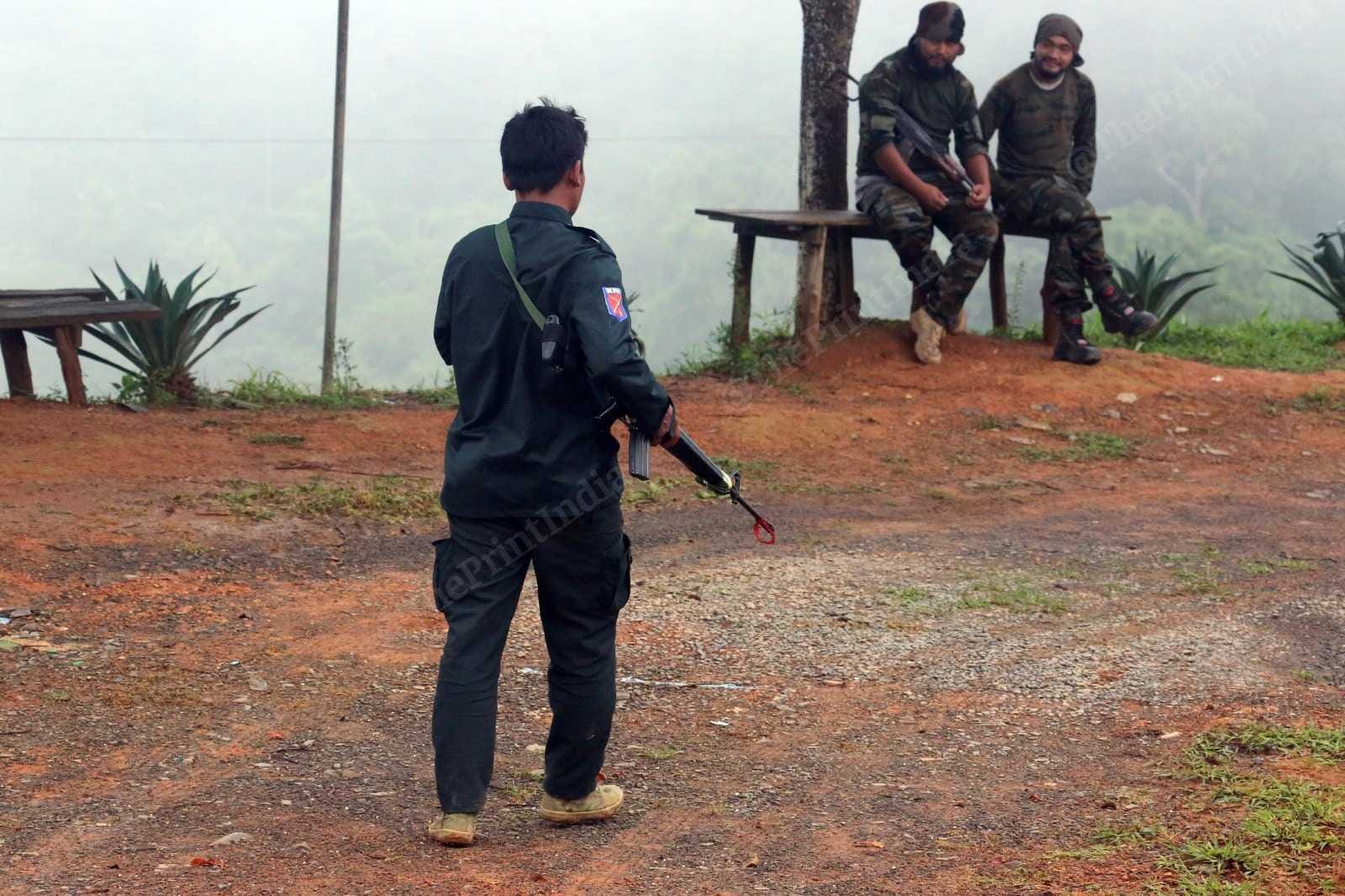
Thousands of weapons — including more than 200 AK-47s, 406 carbines, 551 INSAS rifles, and 250 machine guns — besides over 6.5 lakh rounds of ammunition have been looted from police armouries and stations over the past few months, primarily in the Meitei-dominated Imphal valley, according to police data.
However, there have been no substantial recoveries, leaving a significant arsenal in the hands of local residents and exacerbating the cycle of violence.
In March this year, there were reports that the Manipur government had decided to review the SoO agreement and withdraw from the pact with two Hill-based tribal militant groups — KNA and Zomi Revolutionary Army (ZRA).
But in May, N. Biren Singh dismissed speculation about a review. He, however, added that the state will take “necessary legal action” against those housed in designated SoO camps found indulging in violence.
Speaking to ThePrint, a senior MHA official said that the agreement is indeed extended each year but only after proper discussion with all stakeholders, including the Intelligence Bureau, police and senior ministry functionaries.
“Since it is reviewed every year, we are able to check on the violations. The agreement clearly says that if there are violations, then it can be suspended. So, it is better that all stakeholders carry out an annual review of the same, which keeps these cadres under check,” the officer said.
The officer added that the Kuki issue cannot be resolved till the Naga issue is resolved and the accord is signed.
“If the Naga issue isn’t resolved, this can prolong. It is the priority of the government to ensure that these issues are resolved and development happens in the northeast. Work is being done towards it ,” the officer said.
Also Read: ‘Return stolen arms in 15 days or face action’ — Manipur govt in 1st warning on robbed armouries
‘Ignored and forgotten’
Watched over by two men, seemingly in their 20s, the imposing gate lies at the other end of a rugged mountain trail.
As the gate opens, it unveils a small hillock where a contingent of men in uniform, armed with sophisticated weapons, are keeping a watch on their surroundings.
In one corner, a 30-year-old is busy cleaning his grenade machine gun (GNG), while his friends are busy setting up a game of carrom in an adjacent room.
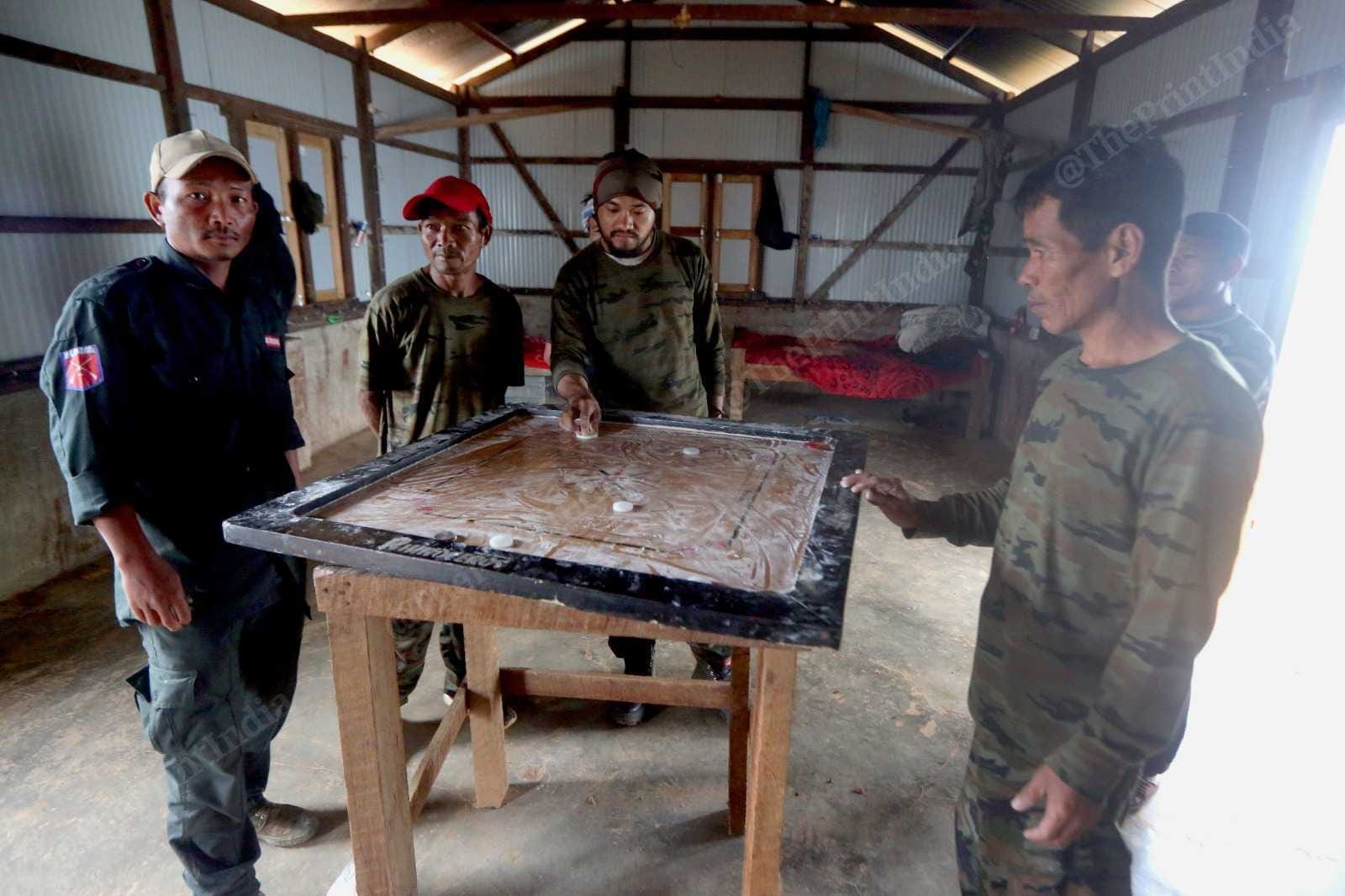
Seated beside the 30-year-old, another friend watches a music video on YouTube.
This is the Chellep SoO camp, where the 27-year-old quoted above stays.
For the inmates at this camp, the day starts at 4 am.
“At 4 am, a whistle is blown and everyone wakes up. Following that, we clean the area and make ‘lal chai’,” said a senior inmate, referring to a famous northeastern sweetened tea beverage made without milk.
“The camp commander then assembles everyone for PT,” the inmate added.
Life here is guided by a fixed routine, and each person has their duties assigned to them — from camp maintenance to kitchen work.
Once the chores are out of the way, the camp inmates convene in the games room for volleyball, carrom, chess, and, on Sundays, a group mass.
“Our daily life here is rather simple and repetitive. It has been this way for many years,” the inmate, a cadre leader in his 60s, said.
“We don’t venture outside. It’s not allowed. We do have some leaves that we avail to visit our families sometimes. Families can also come here, but there are regulations,” he added.
The camp comprises seven barracks, with 19 weapons, including AKs, M16s, M15s, GMGs, and G3s, accessible outside. Another 35 weapons, including carbines, two-inch mortars, and lethor are kept locked.
During elections, a voting machine is set up inside the camp, ensuring everyone’s participation.
Additionally, there’s a television set and smartphones that help them stay informed about events beyond the camp’s confines.
“We may have been ignored and forgotten, but that won’t dampen our fighting spirit,” the cadre leader said. “See how we’re still in uniform.”
According to the cadre leader, the majority of camp residents are young men aged between 25 and 40.
Asked whether they ever ponder why they have been left unemployed, confined to this isolated camp away from the rest of the country, a 32-year-old — who identified himself as the cadre’s defence spokesperson, said, “Yes, sometimes we do wonder.”
“But we’re here for a cause,” he added. “And we won’t allow ourselves to forget that.”
According to the rules listed in the SoO agreement, these cadres are to be provided with vocational skill training at government expense, to ensure their rehabilitation.
This includes training in banking and other jobs at financial institutions, or skills in any other trade.
Asked if any such training was given, the 32-year-old refused. “No, nothing thus far. We receive a stipend of Rs 6,000 per month, which I send home. Sometimes, even that doesn’t arrive for months.”
Also Read: Fresh violence in Manipur over ‘inaction’ in teen murder — BJP office set on fire, police ‘attacked’
‘They create new identities, it’s all a sham’
State police overseeing SoO camps claim routine checks to ensure a minimum 80 percent attendance and secure arms storage.
The idea of the agreement is to make sure that these cadres stay inside the camp, a second source said.
According to the agreement, these camps are to be set up far from populated areas and at a distance from the international border or the boundary of adjoining states.
The entire list of these cadres is with the local police, with their name, date of birth and photo. Whoever leaves the camp has to make an entry for the same, and the police have to be informed. The same, however, is not followed, sources said.
Sources within the security establishment said many members frequently leave the camps with their weapons to engage in “highway extortion”.
Some even employ decoys to elude surprise inspections, equipping them with Aadhaar cards, the sources said.
“Instead of being physically present, these individuals use substitutes under their names, potentially conducting their daily activities elsewhere,” explained a source.
“While some inmates do go out with permission, it’s a very flexible arrangement,” the source added. “It is a sham.”
The source also said that reports detailing these violations had been shared with higher authorities, including the Ministry of Home Affairs, but no action taken.
“We have flagged these violations to the higher authorities. We told them it is dangerous, but no one seems to care,” the source said.
According to a source in the intelligence agencies, there were also reports of these cadres “training” volunteers of the Kuki village defence committees in Hill areas dominated by the community.
“We had inputs that these men came out of the camps to train the volunteers with their own weapons,” the source said.
Despite these allegations, however, there is no data to show if rules of the SoO agreement were indeed violated.
According to the latest check carried out by the state police along with the Assam Rifles, 99 percent of the weapons were accounted for, and only two weapons were recorded missing across 14 camps.
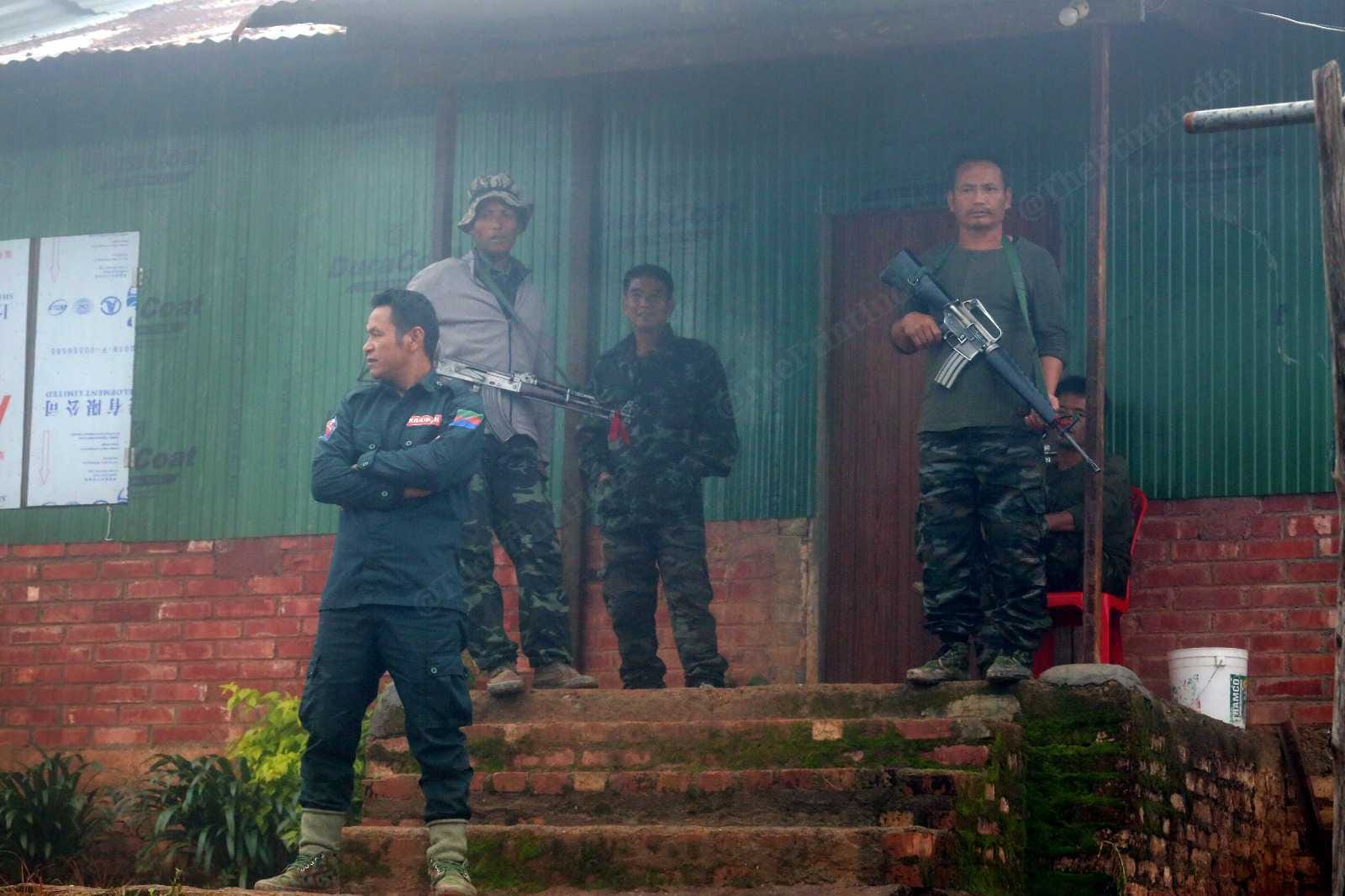
Moreover, in the checks carried out in August-September, their attendance was found to be between 68 and 70 percent, sources in the security establishment said.
The agreement doesn’t just prohibit these cadres from leaving the camp but also from procuring any additional arms. They are also not allowed to construct any memorial, hoist flags of their organisation, or hold any parades.
“They can celebrate their raising day inside the camp but not as a public event,” a source said.
The agreement also states that the cadres cannot incite public to carry out a protest or a blockade. Moreover, they are prohibited from supporting any other militant group or forming a new group under a new name. They also cannot accept any donations, the agreement states.
“The violation of any of it will lead to suspension of the SoO and action be taken against the members,” the source said. “However, we have noticed that in this conflict most of these provisions were violated.”
Meanwhile, for the 27-year-old mentioned above, life now revolves around cleaning his weapons, practice firing, cooking for his comrades, engaging in occasional games of carrom or chess to pass time, and sometimes making a journey back home in Moreh to meet his mother, who is now looking for a prospective bride for him, he said.
“This is like exile. I wore this uniform and joined the army to fight for my land and I continue to feel for that cause,” he added, pointing to his KNA uniform. “The day this stalemate ends and we win, I will go back to my family.”
(Edited by Sunanda Ranjan)
Also Read: ‘They registered FIR & sat on it’ — parents slam Manipur cops after photos of murdered teens surface



